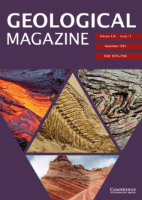
GEOLOGICAL MAGAZINE
Scope & Guideline
A Legacy of Excellence in Geological Scholarship
Introduction
Aims and Scopes
- Geochronology and Isotope Geochemistry:
The journal emphasizes studies that utilize geochronological techniques, particularly U-Pb and Hf isotopes, to date geological events and understand the timing of tectonic processes. - Paleoenvironmental and Paleoecological Studies:
Research on past environments and ecosystems, including studies of ancient sedimentary records, fossil assemblages, and biostratigraphy, is a significant focus, contributing to the understanding of Earth's historical climate and biological evolution. - Tectonics and Structural Geology:
Papers often explore tectonic evolution, structural features, and the relationships between geological formations and tectonic events, providing insights into the dynamic processes shaping the Earth's crust. - Petrogenesis and Magmatism:
The journal publishes research on the origin and evolution of igneous rocks, including studies on volcanic and plutonic rock suites, as well as the geochemical processes involved in their formation. - Sedimentology and Stratigraphy:
Research covering sedimentary processes, depositional environments, and stratigraphic relationships is prevalent, contributing to the understanding of sedimentary basin evolution and sedimentary rock characteristics. - Mineralization and Economic Geology:
Studies addressing the genesis of mineral deposits, including ore genesis and related geochemical processes, highlight the journal's commitment to practical applications of geological research. - Geophysical and Geochemical Methods:
Innovative methodologies such as remote sensing, geophysical modeling, and geochemical analyses are frequently employed to investigate geological problems and enhance data collection.
Trending and Emerging
- Climate Change and Geological Records:
An increasing number of studies are focusing on the relationship between geological records and climate change, examining how past environmental conditions inform current and future climate scenarios. - Geodynamics and Plate Tectonics:
Research investigating the mechanics of plate tectonics and geodynamic processes is on the rise, emphasizing the importance of understanding Earth's dynamic systems and their implications for geological evolution. - Environmental Geoscience:
There is a growing emphasis on the intersection of geology with environmental science, particularly in studies addressing sustainability, resource management, and the impact of human activities on geological processes. - Application of Machine Learning in Geology:
Innovative applications of machine learning and artificial intelligence to analyze geological data and predict geological phenomena are emerging as a significant trend in recent publications. - Hydrocarbon and Mineral Resource Exploration:
Research that applies modern geochemical and geophysical methods to explore hydrocarbon and mineral resources is increasingly prominent, reflecting ongoing interest in resource sustainability and exploration technologies.
Declining or Waning
- Paleontology of Early Vertebrates:
Research focusing on the paleobiology and evolution of early vertebrates has decreased, possibly due to a shift towards more contemporary studies of ecological interactions and climate impacts. - Traditional Lithostratigraphy:
Studies that solely concentrate on traditional lithostratigraphic descriptions without integrating modern techniques or broader geological implications are becoming less common. - Petrography in Isolation:
While petrographic studies remain important, there is a noticeable decline in publications that focus exclusively on petrographic descriptions without linking to broader geological contexts or processes. - Geological Mapping without Geochemical Analysis:
There seems to be a waning interest in purely geological mapping efforts that do not incorporate geochemical or geochronological analyses, reflecting a trend towards more integrated approaches. - Regional Geological Surveys:
Research focusing primarily on regional geological surveys, without addressing global or comparative geological processes, appears to be less frequent in favor of studies with broader implications.
Similar Journals

BULLETIN OF GEOSCIENCES
Pioneering Insights in Earth and Planetary SciencesBULLETIN OF GEOSCIENCES, published by the prestigious Czech Geological Survey, stands as a pivotal resource in the fields of Earth and Planetary Sciences and Environmental Science. Since its inception in 2003, the journal has been committed to advancing knowledge through high-quality research, currently holding a commendable Q2 ranking in both disciplines. With its focus on diverse and innovative topics, BULLETIN OF GEOSCIENCES provides an essential platform for researchers, professionals, and students aiming to disseminate and access impactful studies. The journal is indexed in Scopus, ranking #78/195 in General Earth and Planetary Sciences and #110/233 in General Environmental Science, reflecting its significant contribution to academia. Publishing from Prague, Czech Republic, this journal invites contributions that illuminate the interactions between geological processes and environmental phenomena, ensuring an inclusive and accessible approach to crucial global issues.
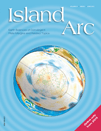
ISLAND ARC
Advancing Knowledge in Earth and Planetary SciencesISLAND ARC is a prestigious journal dedicated to the field of Geology, published by WILEY. With a strong focus on the geology of island arcs and other related research, it serves as a vital resource for scholars, professionals, and students interested in earth and planetary sciences. The journal, which has been in circulation since 1992, is indexed in Scopus and holds a commendable Q2 ranking in its category for 2023, indicating its significant impact within the geological community. The journal’s ISSN is 1038-4871 and its E-ISSN is 1440-1738. Although it does not currently offer open access, it remains a crucial platform for disseminating high-quality research relevant to geological phenomena, promoting interdisciplinary collaborations and advancing our understanding of geological processes. With an address in Hoboken, New Jersey, ISLAND ARC continues to enhance its global influence and scholarly contributions through rigorous peer review and a commitment to excellence.

GEOLOGICAL QUARTERLY
Fostering Scientific Collaboration in Geology.GEOLOGICAL QUARTERLY, published by the Polish Geological Institute, is a respected journal in the field of geology, offering insights into Earth and planetary sciences since its inception in 2000. With an ISSN of 1641-7291 and an E-ISSN of 2082-5099, this journal serves as a vital platform for researchers, professionals, and students seeking to expand their knowledge in geological disciplines. The journal is positioned in Q3 within the geology category as of 2023 and ranks #172 out of 321 in Scopus, placing it in the 46th percentile among its peers. Although currently not an open-access publication, GEOLOGICAL QUARTERLY reflects the policy of fostering scientific communication and collaboration by disseminating valuable geological research. Its commitment to publishing original articles, reviews, and technical notes ensures that it plays a significant role in advancing geological science and its applications within the academic community. With its base in Warsaw, Poland, the journal stands as an important resource for anyone engaged in or studying the Earth sciences.

BASIN RESEARCH
Illuminating the Path of Earth and Planetary SciencesBasin Research, published by Wiley, is a leading journal in the field of Geology, with a distinguished reputation affirmed by its Q1 ranking in the 2023 category of Earth and Planetary Sciences. Since its inception in 1988, the journal has been at the forefront of fundamental and applied research surrounding sedimentary basins, delving into their evolution, architecture, and dynamics. With an impressive Scopus rank of #36 out of 321, placing it in the 88th percentile, Basin Research serves as a critical platform for researchers, professionals, and students engaged in advancing our understanding of geological processes and their implications for natural resources and environmental policies. The journal is accessible to a global audience and emphasizes high-quality, peer-reviewed articles that cover a diverse array of topics from basin analysis to sedimentology and beyond. For those interested in deepening their insights into this vital area of study, Basin Research stands as an invaluable resource in the academic landscape.
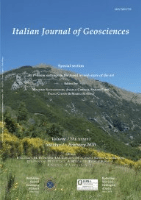
Italian Journal of Geosciences
Unlocking Planetary Insights: Where Earth Meets ResearchItalian Journal of Geosciences, published by the Società Geologica Italiana, is a distinguished platform for the dissemination of research in the fields of Earth and Planetary Sciences and Geology. With an impressive impact factor reflected in its 2023 rankings, where it placed in the Q3 category across its related fields, this journal serves as a vital resource for academics, practitioners, and students. Established in 2010 and poised to continue until 2024, the journal showcases critical advancements and interdisciplinary studies that deepen our understanding of geological processes and Earth systems. Operating under open access options, it offers robust accessibility to a broad audience, facilitating wider dissemination of knowledge. The journal's affiliation with Università degli Studi La Sapienza in Rome, Italy, further underscores its commitment to academic excellence and innovation in geosciences.
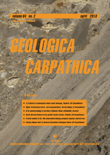
GEOLOGICA CARPATHICA
Bridging the Gap Between Theory and Practice in GeologyGEOLOGICA CARPATHICA, with ISSN 1335-0552 and E-ISSN 1336-8052, is a distinguished open access journal published by the Slovak Academy of Sciences Geological Institute, serving as a pivotal platform for the dissemination of research in the field of Geology. Established in 1991 and continuing through 2024, the journal is recognized for its significant contributions to Earth and Planetary Sciences, evidenced by its 2023 Scopus ranking placing it in the second quartile (Q2) within Geology. With an H-index that showcases its impactful publications, GEOLOGICA CARPATHICA is committed to fostering scholarly communication while promoting accessible research, having adopted an open access model since 2009. Located in beautiful Bratislava, Slovakia, this journal aims to engage a global audience of researchers, professionals, and students interested in ecological, geological, and environmental studies, making it a prominent resource for enriching the scientific community's understanding of the Carpathian region and beyond.

Journal of Earth Science
Unveiling geological insights for a sustainable future.Journal of Earth Science, published by the China University of Geosciences, Wuhan, is a leading journal in the field of Earth and Planetary Sciences, recognized for its significant contributions to the understanding of geological processes and environmental challenges. With an impressive Q1 ranking among Earth and Planetary Sciences journals and a strong position at Rank #39/195 in Scopus, this journal not only showcases high-quality research but also serves as a crucial platform for disseminating innovative findings, spanning a broad spectrum of topics from geophysics to climate change. The journal adopts an open access model, which enhances the visibility and accessibility of research articles published from 2009 to 2024, thereby facilitating collaboration and knowledge sharing among the global scientific community. With its commitment to advancing geosciences, Journal of Earth Science is invaluable for researchers, professionals, and students alike, eager to stay informed and contribute to ongoing discussions in this dynamic field.

INTERNATIONAL JOURNAL OF EARTH SCIENCES
Connecting Global Insights in Earth SciencesINTERNATIONAL JOURNAL OF EARTH SCIENCES, published by Springer, is a leading journal in the field of Earth and Planetary Sciences, distinguished by its Q1 quartile ranking in the 2023 category of Earth and Planetary Sciences (miscellaneous). With an ISSN of 1437-3254 and an E-ISSN of 1437-3262, this journal has been a pivotal platform for researchers, academics, and practitioners since its inception in 1996. The journal's focus encompasses a broad range of topics within Earth sciences, making it a vital resource for contributions that enhance our understanding of geological processes, climate change, and planetary dynamics. The impact factor reflects its high standards and the significance of the research it publishes, ranking it in the 74th percentile among its peers as per Scopus. Furthermore, the journal offers Open Access options, facilitating the global dissemination of groundbreaking research. The editorial team is committed to advancing knowledge in Earth sciences, serving as an essential reference for students and professionals looking to engage deeply with this dynamic field.

JOURNAL OF IBERIAN GEOLOGY
Advancing geological knowledge of the Iberian Peninsula.JOURNAL OF IBERIAN GEOLOGY, published by Springer International Publishing AG, is a pivotal platform dedicated to advancing the field of geology and stratigraphy. With an ISSN of 1698-6180 and E-ISSN of 1886-7995, this journal has earned its reputation in the academic community, holding a commendable Q2 ranking in both Geology and Stratigraphy for 2023, reflecting its contributions to contemporary geological research. Spanning from 2007 to 2024, it provides a comprehensive forum for scholars and practitioners from around the globe to disseminate their findings pertaining to the Iberian Peninsula, enhancing the understanding of regional geological phenomena. The journal has carved out a significant niche within the Earth and Planetary Sciences, ranking #137 out of 321 in Geology and #24 out of 55 in Stratigraphy, indicating its wide-reaching impact and scholarly engagement. The Journal of Iberian Geology serves as an indispensable resource for those interested in the complexities of geological structures, stratigraphic sequences, and the broader implications of geological research, making it a vital reference for researchers, professionals, and students alike.
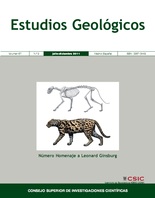
ESTUDIOS GEOLOGICOS-MADRID
Unveiling Geological Insights for a Sustainable Future.ESTUDIOS GEOLOGICOS-MADRID is a prominent journal in the field of geology, published by the esteemed Consejo Superior de Investigaciones Científicas (CSIC) in Spain. Established in 1976, this Open Access journal has been a vital resource for researchers and professionals since its inception. With an impact factor reflecting its contribution to the Earth and Planetary Sciences community, ESTUDIOS GEOLOGICOS-MADRID currently holds a Q3 category ranking in Geology as of 2023, showcasing its relevance and quality within the discipline. The journal publishes a diverse array of geological studies, ensuring wide-reaching access to significant research findings, thereby promoting collaboration and knowledge sharing. Established as a platform for both foundational research and applied geology, this journal fosters academic growth and contributes to understanding the Earth’s processes. Researchers, professionals, and students are encouraged to explore its extensive archive, which includes publications from 1976 to the present. For more information, visit the journal's editorial office at Editorial CSIC, C/VITRUVIO 8, 28006 MADRID, SPAIN.